Code & Go® Robot Mouse Activity Set
- Learning Resources Posted On Feb 15, 2022 | Community
Teach early coding skills through 100% screen-free, hands-on play with the Code & Go® Robot Mouse Activity Set.
This is a demo store. No orders will be fulfilled.
FREE DELIVERY on all UK online orders over £50!FREE DELIVERY on all UK online orders over £50!
Teach early coding skills through 100% screen-free, hands-on play with the Code & Go® Robot Mouse Activity Set.
Teach early coding skills through 100% screen-free, hands-on play with the Code & Go® Robot Mouse Activity Set.
 Fresh Veggies Day is on the 16th of June and emphasises the importance of eating fresh fruit and vegetables every day.Liz Roffe is our Sales Office Manager and resident vegetable grower! We caught up with her to find out about her vegetable patch and asked for hints, tips and recipe inspiration in celebration of Fresh Veggies Day! Where is your vegetable patch and how long have you had it for?
Fresh Veggies Day is on the 16th of June and emphasises the importance of eating fresh fruit and vegetables every day.Liz Roffe is our Sales Office Manager and resident vegetable grower! We caught up with her to find out about her vegetable patch and asked for hints, tips and recipe inspiration in celebration of Fresh Veggies Day! Where is your vegetable patch and how long have you had it for? Our veggie patch is part of our garden and we have had it since moving in, so around nine years.It’s nice having it as part of the garden as you can just pop out and get fresh veggies for tea each evening (you’ve got to have obligatory veggies for tea in our house!) What vegetables do you grow and which is your favourite?We grow a range of veggies including: carrots, parsnips, sweet corn, butternut squash, brussel sprouts, cauliflower, peas, broad beans, leeks, spinach, potatoes, onions, beetroot, runner beans, French beans & broccoli. My favourite is freshly picked sweet corn, you can’t beat it!
Our veggie patch is part of our garden and we have had it since moving in, so around nine years.It’s nice having it as part of the garden as you can just pop out and get fresh veggies for tea each evening (you’ve got to have obligatory veggies for tea in our house!) What vegetables do you grow and which is your favourite?We grow a range of veggies including: carrots, parsnips, sweet corn, butternut squash, brussel sprouts, cauliflower, peas, broad beans, leeks, spinach, potatoes, onions, beetroot, runner beans, French beans & broccoli. My favourite is freshly picked sweet corn, you can’t beat it! (Liz’s sweet corn plants in the greenhouse before being planted)
(Liz’s sweet corn plants in the greenhouse before being planted) (Liz’s sweet corn plants after being planted) What is the easiest vegetable to grow, and which one takes the most effort?I grow most of my plants from seeds in pots before planting them in the patch. Things like carrots, potatoes and parsnips are planted directly. The easiest things to grow are sweet corn and butternut squash as, once planted in the patch, they pretty much look after themselves. Carrots, beetroot and parsnips just need a bit of thinning out and covering but apart from that they are quite easy to look after too.
(Liz’s sweet corn plants after being planted) What is the easiest vegetable to grow, and which one takes the most effort?I grow most of my plants from seeds in pots before planting them in the patch. Things like carrots, potatoes and parsnips are planted directly. The easiest things to grow are sweet corn and butternut squash as, once planted in the patch, they pretty much look after themselves. Carrots, beetroot and parsnips just need a bit of thinning out and covering but apart from that they are quite easy to look after too. How much time goes in to maintaining the patch?Once the veggies are planted it’s just a case of keeping the weeds down and watering them when it’s hot. Initially it can be a little time consuming but just doing the odd 15 minutes here and there is enough to keep on top of things. What are the biggest challenges when growing your own veg?Bugs and slugs! We do our best to use natural remedies and nets to keep them at bay. What time of year do you reap the rewards of your efforts?We try to have things in the garden all year round but there are some times at the beginning of the year when things are a little sparse. It’s normally from July/August onwards when we have an abundance of veggies.
How much time goes in to maintaining the patch?Once the veggies are planted it’s just a case of keeping the weeds down and watering them when it’s hot. Initially it can be a little time consuming but just doing the odd 15 minutes here and there is enough to keep on top of things. What are the biggest challenges when growing your own veg?Bugs and slugs! We do our best to use natural remedies and nets to keep them at bay. What time of year do you reap the rewards of your efforts?We try to have things in the garden all year round but there are some times at the beginning of the year when things are a little sparse. It’s normally from July/August onwards when we have an abundance of veggies. How do you keep the soil rich and nutritious?My husband David and I compost all of the leaves from the garden and use it on the veggie patch. We also add horse manure. Once a year, to help keep the soil light, we add recycled compost from a nursery, normally a tractor trailer load.
How do you keep the soil rich and nutritious?My husband David and I compost all of the leaves from the garden and use it on the veggie patch. We also add horse manure. Once a year, to help keep the soil light, we add recycled compost from a nursery, normally a tractor trailer load. (David ploughing with his Anzani Iron Horse, a piece of horticultural machinery from 1945) What advice would you give to somebody who was thinking about starting a vegetable patch? Do it! Even if you don’t grow things from seeds you can get veggie plants ready to set out from garden centres. However small a patch, there is nothing better that having fresh veggies straight from the garden. Do you have any special recipes you can share with us?As we get quite a lot of butternut squash I make soup which is lovely.
(David ploughing with his Anzani Iron Horse, a piece of horticultural machinery from 1945) What advice would you give to somebody who was thinking about starting a vegetable patch? Do it! Even if you don’t grow things from seeds you can get veggie plants ready to set out from garden centres. However small a patch, there is nothing better that having fresh veggies straight from the garden. Do you have any special recipes you can share with us?As we get quite a lot of butternut squash I make soup which is lovely. *Browse our outdoor discovery and exploration tools on our website!
*Browse our outdoor discovery and exploration tools on our website! Fresh Veggies Day is on the 16th of June and emphasises the importance of eating fresh fruit and vegetables every day.Liz Roffe is our Sales Office Manager and resident vegetable grower! We caught up with her to find out about her vegetable patch and asked for hints, tips and recipe inspiration in celebration of Fresh Veggies Day! Where is your vegetable patch and how long have you had it for?
Fresh Veggies Day is on the 16th of June and emphasises the importance of eating fresh fruit and vegetables every day.Liz Roffe is our Sales Office Manager and resident vegetable grower! We caught up with her to find out about her vegetable patch and asked for hints, tips and recipe inspiration in celebration of Fresh Veggies Day! Where is your vegetable patch and how long have you had it for? Our veggie patch is part of our garden and we have had it since moving in, so around nine years.It’s nice having it as part of the garden as you can just pop out and get fresh veggies for tea each evening (you’ve got to have obligatory veggies for tea in our house!) What vegetables do you grow and which is your favourite?We grow a range of veggies including: carrots, parsnips, sweet corn, butternut squash, brussel sprouts, cauliflower, peas, broad beans, leeks, spinach, potatoes, onions, beetroot, runner beans, French beans & broccoli. My favourite is freshly picked sweet corn, you can’t beat it!
Our veggie patch is part of our garden and we have had it since moving in, so around nine years.It’s nice having it as part of the garden as you can just pop out and get fresh veggies for tea each evening (you’ve got to have obligatory veggies for tea in our house!) What vegetables do you grow and which is your favourite?We grow a range of veggies including: carrots, parsnips, sweet corn, butternut squash, brussel sprouts, cauliflower, peas, broad beans, leeks, spinach, potatoes, onions, beetroot, runner beans, French beans & broccoli. My favourite is freshly picked sweet corn, you can’t beat it! (Liz’s sweet corn plants in the greenhouse before being planted)
(Liz’s sweet corn plants in the greenhouse before being planted) (Liz’s sweet corn plants after being planted) What is the easiest vegetable to grow, and which one takes the most effort?I grow most of my plants from seeds in pots before planting them in the patch. Things like carrots, potatoes and parsnips are planted directly. The easiest things to grow are sweet corn and butternut squash as, once planted in the patch, they pretty much look after themselves. Carrots, beetroot and parsnips just need a bit of thinning out and covering but apart from that they are quite easy to look after too.
(Liz’s sweet corn plants after being planted) What is the easiest vegetable to grow, and which one takes the most effort?I grow most of my plants from seeds in pots before planting them in the patch. Things like carrots, potatoes and parsnips are planted directly. The easiest things to grow are sweet corn and butternut squash as, once planted in the patch, they pretty much look after themselves. Carrots, beetroot and parsnips just need a bit of thinning out and covering but apart from that they are quite easy to look after too. How much time goes in to maintaining the patch?Once the veggies are planted it’s just a case of keeping the weeds down and watering them when it’s hot. Initially it can be a little time consuming but just doing the odd 15 minutes here and there is enough to keep on top of things. What are the biggest challenges when growing your own veg?Bugs and slugs! We do our best to use natural remedies and nets to keep them at bay. What time of year do you reap the rewards of your efforts?We try to have things in the garden all year round but there are some times at the beginning of the year when things are a little sparse. It’s normally from July/August onwards when we have an abundance of veggies.
How much time goes in to maintaining the patch?Once the veggies are planted it’s just a case of keeping the weeds down and watering them when it’s hot. Initially it can be a little time consuming but just doing the odd 15 minutes here and there is enough to keep on top of things. What are the biggest challenges when growing your own veg?Bugs and slugs! We do our best to use natural remedies and nets to keep them at bay. What time of year do you reap the rewards of your efforts?We try to have things in the garden all year round but there are some times at the beginning of the year when things are a little sparse. It’s normally from July/August onwards when we have an abundance of veggies. How do you keep the soil rich and nutritious?My husband David and I compost all of the leaves from the garden and use it on the veggie patch. We also add horse manure. Once a year, to help keep the soil light, we add recycled compost from a nursery, normally a tractor trailer load.
How do you keep the soil rich and nutritious?My husband David and I compost all of the leaves from the garden and use it on the veggie patch. We also add horse manure. Once a year, to help keep the soil light, we add recycled compost from a nursery, normally a tractor trailer load. (David ploughing with his Anzani Iron Horse, a piece of horticultural machinery from 1945) What advice would you give to somebody who was thinking about starting a vegetable patch? Do it! Even if you don’t grow things from seeds you can get veggie plants ready to set out from garden centres. However small a patch, there is nothing better that having fresh veggies straight from the garden. Do you have any special recipes you can share with us?As we get quite a lot of butternut squash I make soup which is lovely.
(David ploughing with his Anzani Iron Horse, a piece of horticultural machinery from 1945) What advice would you give to somebody who was thinking about starting a vegetable patch? Do it! Even if you don’t grow things from seeds you can get veggie plants ready to set out from garden centres. However small a patch, there is nothing better that having fresh veggies straight from the garden. Do you have any special recipes you can share with us?As we get quite a lot of butternut squash I make soup which is lovely. *Browse our outdoor discovery and exploration tools on our website!
*Browse our outdoor discovery and exploration tools on our website!This month we are taking part in The Wildlife Trusts’ #30dayswild campaign! We took a trip to Cley Marshes Nature Reserve on the north Norfolk coast to meet with their Community Education Officer, Rachael Wright. We asked her all about the campaign, why it is so important and how you can get involved!

Tell us about Cley Marshes Nature Reserve:It is Norfolk Wildlife Trust’s oldest and best known nature reserve and was purchased in 1926. The reserve includes an award-winning visitor centre, a gallery and a Wildlife Education Centre named in memory of the naturalist, Simon Aspinall.
We are well known for the birds on site. The shingle beach and saline lagoons, along with the grazing marsh and reed bed support large numbers of wintering and migrating wildfowl and waders, as well as bittern, marsh harrier and bearded tit.

[Image of Marsh Harrier, credit: Norfolk Wildlife Trust Website]
What does your role at the Norfolk Wildlife Trust involve?I organise our events programme and exhibitions. We work with local community groups and I take school groups and other education visitors out on the reserve. The Cley Marshes provides school groups with great opportunities to explore both coastal and wetland habitats!

What’s your favourite thing about your role?Working with school groups and inspiring the next generation to explore wildlife and have fun outdoors!
What is #30dayswild and how can people sign up?30 Days Wild is a Wildlife Trust campaign aimed at getting people outside enjoying the living landscape. We encourage and support people to take a little bit of time every day to do something wild! People can sign up on their local Wildlife Trust website and will receive a digital support pack with ideas, inspiration and information on local events and places you can explore! You can share your wild adventures using the #30DaysWild hashtag.

What do you have planned for #30dayswild during June?We have crafts and activities in our education centre throughout June and events on throughout the month. From nature walks to pond dipping there’s something for everyone, take a look on our website for events this June!
What is a Random Act of Wildness?A Random Act of Wildness is about making time to connect with nature around you, or doing something small yourself to help nature. Random Acts of Wildness are all about experiencing, learning about and helping your local wildlife. They can be simple, small, fun and exciting too. You can use our ideas as inspiration or get creative and make up your own!

Why is getting out into nature so important?It’s important to stay in touch with the natural world and appreciate all that nature does for us. It’s also incredibly important in our busy lives to take time to relax and exploring nature is a fantastic way to do that. A recent poll of 101 people in Norwich revealed that 90% of Norwich’s city-dwellers feel that nature is important to them but 86% of adults in Norwich don’t think that they spend enough time in nature.
What are the educational benefits of exploring nature?Many people learn more effectively through hands on activities and nature provides so many great opportunities. Watching nature events creates memories that will last forever. Every subject taught in a classroom can be taught outside in a more fun and engaging way that will inspire children for a lifetime!

EI-5126 GeoSafari® Jr. Aqua Magnifier
If you are visiting the centre this June, pick up your free Aqua Magnifier (while stocks last) and Learning Resources discount code!
*Browse our outdoor exploration and discovery tools on our website!
[contact-form][contact-field label='Name' type='name' required='1'/][contact-field label='Email' type='email' required='1'/][contact-field label='Website' type='url'/][contact-field label='Comment' type='textarea' required='1'/][/contact-form]
This month we are taking part in The Wildlife Trusts’ #30dayswild campaign! We took a trip to Cley Marshes Nature Reserve on the north Norfolk coast to meet with their Community Education Officer, Rachael Wright. We asked her all about the campaign, why it is so important and how you can get involved!

Tell us about Cley Marshes Nature Reserve:It is Norfolk Wildlife Trust’s oldest and best known nature reserve and was purchased in 1926. The reserve includes an award-winning visitor centre, a gallery and a Wildlife Education Centre named in memory of the naturalist, Simon Aspinall.
We are well known for the birds on site. The shingle beach and saline lagoons, along with the grazing marsh and reed bed support large numbers of wintering and migrating wildfowl and waders, as well as bittern, marsh harrier and bearded tit.

[Image of Marsh Harrier, credit: Norfolk Wildlife Trust Website]
What does your role at the Norfolk Wildlife Trust involve?I organise our events programme and exhibitions. We work with local community groups and I take school groups and other education visitors out on the reserve. The Cley Marshes provides school groups with great opportunities to explore both coastal and wetland habitats!

What’s your favourite thing about your role?Working with school groups and inspiring the next generation to explore wildlife and have fun outdoors!
What is #30dayswild and how can people sign up?30 Days Wild is a Wildlife Trust campaign aimed at getting people outside enjoying the living landscape. We encourage and support people to take a little bit of time every day to do something wild! People can sign up on their local Wildlife Trust website and will receive a digital support pack with ideas, inspiration and information on local events and places you can explore! You can share your wild adventures using the #30DaysWild hashtag.

What do you have planned for #30dayswild during June?We have crafts and activities in our education centre throughout June and events on throughout the month. From nature walks to pond dipping there’s something for everyone, take a look on our website for events this June!
What is a Random Act of Wildness?A Random Act of Wildness is about making time to connect with nature around you, or doing something small yourself to help nature. Random Acts of Wildness are all about experiencing, learning about and helping your local wildlife. They can be simple, small, fun and exciting too. You can use our ideas as inspiration or get creative and make up your own!

Why is getting out into nature so important?It’s important to stay in touch with the natural world and appreciate all that nature does for us. It’s also incredibly important in our busy lives to take time to relax and exploring nature is a fantastic way to do that. A recent poll of 101 people in Norwich revealed that 90% of Norwich’s city-dwellers feel that nature is important to them but 86% of adults in Norwich don’t think that they spend enough time in nature.
What are the educational benefits of exploring nature?Many people learn more effectively through hands on activities and nature provides so many great opportunities. Watching nature events creates memories that will last forever. Every subject taught in a classroom can be taught outside in a more fun and engaging way that will inspire children for a lifetime!

EI-5126 GeoSafari® Jr. Aqua Magnifier
If you are visiting the centre this June, pick up your free Aqua Magnifier (while stocks last) and Learning Resources discount code!
*Browse our outdoor exploration and discovery tools on our website!
[contact-form][contact-field label='Name' type='name' required='1'/][contact-field label='Email' type='email' required='1'/][contact-field label='Website' type='url'/][contact-field label='Comment' type='textarea' required='1'/][/contact-form]
READ MORE
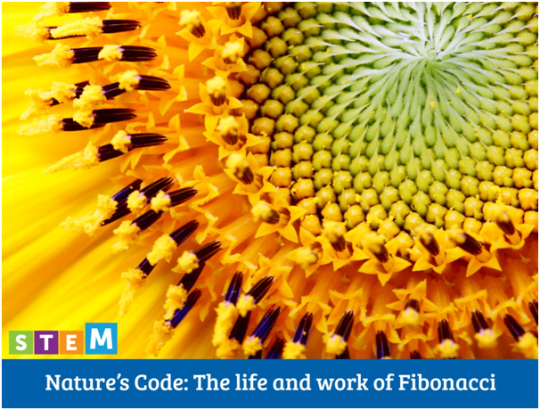

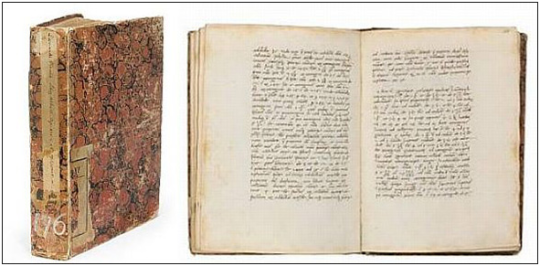

-Fibonacci
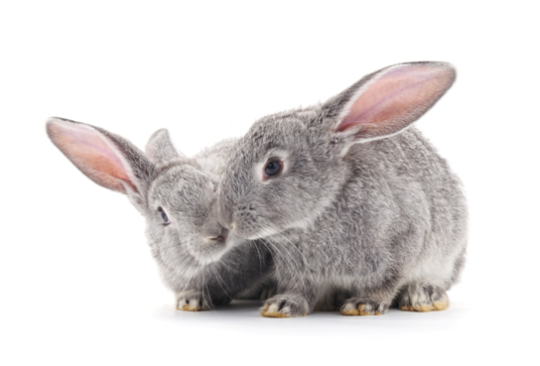
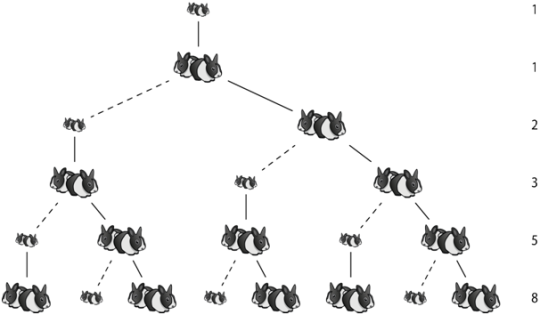


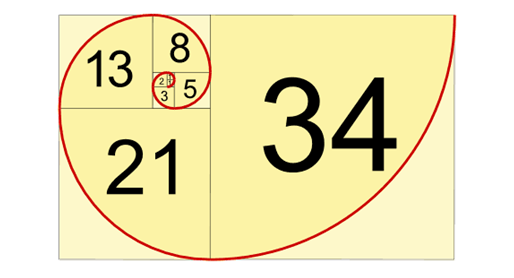

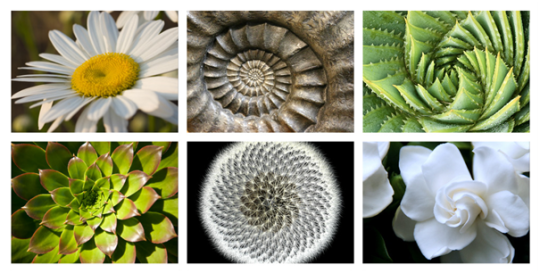
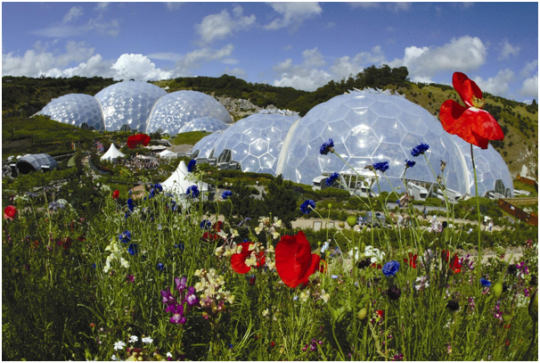
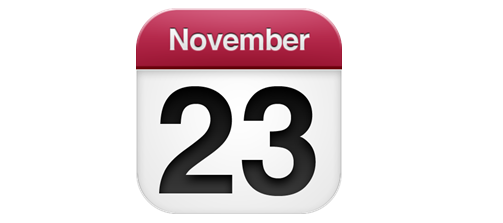





-Fibonacci











